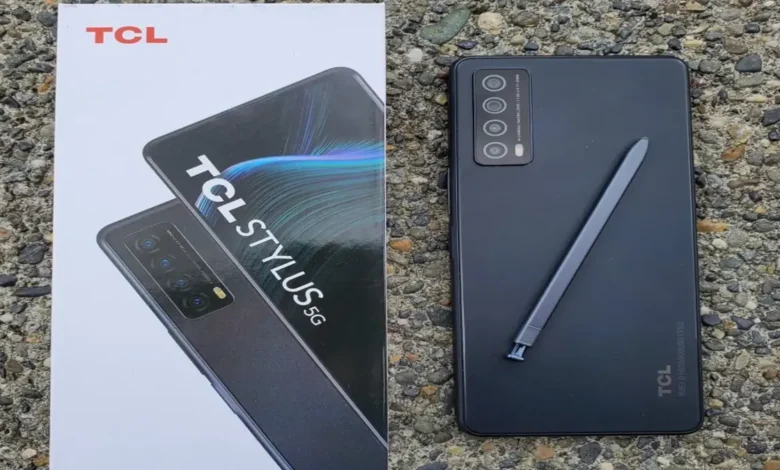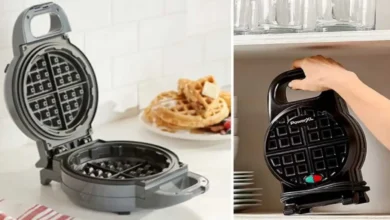Smartphone Stylus: The Ultimate Guide to Modern Mobile Precision

Smartphone Stylus The smartphone stylus has become a must-have tool for tech lovers, artists, business professionals, and everyday users who crave precision and creativity on the go. Gone are the days when styluses were clunky plastic pens used only on Palm Pilots or early PDAs. Now, they’re sleek, responsive, and loaded with features that turn your phone into a powerful creative and productivity machine.
Whether you’re jotting down quick notes, sketching digital masterpieces, editing photos, or simply navigating your screen with pinpoint accuracy, a smartphone stylus brings a whole new level of functionality to your device. This article dives deep into everything you need to know about the modern stylus: how it works, what makes a good one, which brands are leading the game, and why this small accessory can make a big difference.
What Is a Smartphone Stylus?
A smartphone stylus is essentially a digital pen designed for touchscreen devices. It’s engineered to mimic the motion and pressure of a finger but with far greater precision. Styluses come in two broad categories: passive and active. A passive stylus, also known as a capacitive stylus, simply conducts the electrical charge from your hand to the screen. It doesn’t require batteries and works with most touchscreens. On the other hand, active styluses are loaded with tech. They often feature pressure sensitivity, tilt recognition, programmable buttons, and palm rejection for more advanced tasks.
What sets the smartphone stylus apart from traditional input methods is its accuracy. Instead of using your finger and hoping you don’t mistap, the stylus lets you hit tiny points on your screen without issue. It also gives you a more natural way to draw or write. Think of it as taking your finger and giving it the elegance of a fine-point pen.
Why People Use a Smartphone Stylus
The reasons to use a smartphone stylus are diverse and growing. For starters, it’s a dream tool for anyone into digital art. Drawing apps like Procreate Pocket or Adobe Illustrator on a smartphone come alive when paired with a good stylus. You can control the thickness, pressure, and texture of your strokes in a way that your fingers just can’t achieve.
But it’s not just about art. Note-taking becomes a breeze with a stylus. Apps like Samsung Notes or OneNote let you handwrite your ideas, annotate documents, or highlight PDFs as naturally as if you had pen and paper in hand. This tactile experience helps with memory retention and can make meetings or classes way more productive.
A smartphone stylus is also great for productivity in general. Need to sign a document? Boom done in seconds. Want to edit photos with detailed touch-ups? The stylus makes it feel like you’re wielding a fine-tuned tool, not just your thumb. It’s also incredibly helpful for people with larger fingers or limited mobility.
Stylus vs. Finger: Why Precision Matters
Using your fingers works fine for most everyday smartphone tasks. You can swipe, tap, and pinch with ease. But try drawing a detailed sketch or selecting a small checkbox in a document using your finger, and you’ll realize why a stylus is superior. Precision isn’t just a luxury it’s essential for tasks that require accuracy.
When you’re using a smartphone stylus, you’re gaining fine motor control over your inputs. You can make intricate movements, fine selections, and clean lines. This is especially helpful when dealing with spreadsheets, editing photos, or doing graphic design work. The stylus gives you surgical-level accuracy compared to the big, blurry strokes of a fingertip.
Besides precision, the stylus also provides a more natural user experience. Writing with a stylus feels more fluid and familiar compared to typing or tapping. It turns your screen into a canvas or notebook rather than just a digital surface. This emotional connection to how we naturally write or draw makes the stylus a more intuitive tool.
Passive Stylus vs. Active Stylus
When choosing a smartphone stylus, it’s important to understand the difference between passive and active models. A passive stylus is essentially just a stick with a conductive tip. It doesn’t need batteries, charging, or Bluetooth connectivity. It’s simple, affordable, and works with almost any capacitive touchscreen device.
The downside is that passive styluses don’t have pressure sensitivity or advanced features. They’re good for basic tasks like navigation or quick note-taking, but not ideal for artists or professionals who need more control. They often have wider tips, which can feel less precise.
Active styluses, on the other hand, are more advanced. They usually connect via Bluetooth and offer features like pressure sensitivity, palm rejection, and programmable buttons. They’re powered by batteries or rechargeable cells. These are the styluses you want for drawing, annotating documents, or taking detailed notes.
Most of the big-name styluses like the Apple Pencil or Samsung S Pen fall into this category. They work in harmony with their devices to offer a seamless and responsive experience. If you’re serious about what you do on your phone, an active stylus is worth the investment.
Best Smartphones with Built-In Stylus Support
Some smartphones are designed with stylus functionality in mind, offering built-in holders and special software to enhance the experience. Samsung’s Galaxy Note series is perhaps the most iconic example. The S Pen slips right into the phone and charges while docked. It offers features like air gestures, screen-off memos, and precise drawing tools.
Motorola also jumped into the game with its Moto G Stylus line. While not as advanced as the Note, it provides a decent built-in stylus and software enhancements at a more budget-friendly price. LG’s older Stylo series also provided similar functionality.
Phones with built-in stylus support typically come with apps designed to take advantage of the stylus. You can write on the screen, draw sketches, highlight text, and more. This integrated experience is more convenient than carrying a separate stylus around. If you’re someone who uses a stylus regularly, it’s worth considering a device that supports it out of the box.
Popular Smartphone Stylus Brands
When it comes to choosing a smartphone stylus, brand matters. Apple, Samsung, and Microsoft are the big players, but there are also plenty of third-party options that deliver excellent performance. The Apple Pencil, for instance, offers incredible precision, pressure sensitivity, and a seamless connection to iPhones and iPads (mostly iPads, though). It’s the go-to for many digital artists and professionals.
Samsung’s S Pen is equally impressive. Integrated into their Galaxy Note and Galaxy S Ultra lines, it provides features like Bluetooth control, handwriting-to-text conversion, and remote shutter capabilities. It’s tightly woven into Samsung’s ecosystem and gets better with every generation.
Other noteworthy brands include Adonit, Wacom, and Staedtler. Adonit’s styluses range from basic to professional-grade, some even offering USB-C charging and replaceable tips. Wacom’s styluses are known for their pressure sensitivity and durability. Staedtler, a classic pencil brand, offers a digital stylus that mimics the feel of writing with a traditional pencil.
How Stylus Technology Has Evolved
The journey of stylus technology has been fascinating. Early styluses were resistive, requiring pressure to register input. They were clunky and imprecise, often more frustrating than helpful. But as capacitive screens took over, styluses had to adapt and they did so beautifully.
Today’s styluses can detect tilt, pressure, angle, and even your palm to avoid accidental touches. Some come with haptic feedback, while others let you program shortcuts for switching tools. The materials used for the tips have also improved, offering a more pen-like feel with minimal screen resistance.
Software has evolved too. Apps are now stylus-aware, adapting to pressure and input types to provide more realistic drawing, writing, and editing experiences. With artificial intelligence and machine learning integrated, styluses are even capable of handwriting recognition and gesture controls. The stylus has gone from novelty to necessity for a wide range of users.
Using a Smartphone Stylus for Creativity
If you’re a creative person, a smartphone stylus can be a total game-changer. Digital artists love the pressure sensitivity that allows for different line thicknesses and shading effects. Apps like SketchBook, Infinite Painter, and Ibis Paint X thrive when used with a stylus.
Musicians and lyricists often use styluses to jot down quick ideas or edit musical notation. Writers love them for making handwritten notes and organizing storyboards. Even photographers use styluses for detailed editing and retouching.
The freedom to create anywhere on the train, in a Cafe, or your backyard makes the smartphone stylus a portable studio. It breaks down the barrier between inspiration and execution, letting you capture ideas in the moment.
Enhancing Productivity with a Stylus
Styluses aren’t just for artists they’re also perfect for boosting everyday productivity. Need to sign a document? Done in seconds. Want to highlight a PDF or add a quick annotation? The stylus makes it fast and accurate.
Business professionals can use styluses during meetings to take handwritten notes, diagram ideas, or mark up documents in real time. Students can benefit by using styluses to solve math problems, annotate readings, or record lectures with on-screen notes.
Combined with the right apps, your stylus becomes more than a writing tool it becomes a productivity powerhouse. Think of it as the Swiss Army knife for your smartphone tasks.
Stylus Accessories and Maintenance Tips
To get the most out of your smartphone stylus, you might want to consider some accessories. A carrying case can protect it from damage or loss. Replacement tips are useful, especially for active styluses that wear out over time. Screen protectors designed for stylus use can also help reduce wear and improve the writing feel.
Charging accessories are important for active styluses. Some models charge via USB-C, while others use custom magnetic chargers. Keeping your stylus clean is also crucial. Wipe the tip regularly with a microfiber cloth and avoid using it on dirty or greasy screens.
Storage is key—try to keep your stylus in a designated holder or dock. Leaving it loose in a bag can lead to damage or misplacement. Treat your stylus with care, and it will return the favor with years of smooth operation.
The Future of Smartphone Stylus Technology
Stylus technology continues to evolve rapidly. Future styluses may include even more intelligent features, like built-in microphones for voice commands, biometric authentication, or real-time translation of handwriting into different languages.
We’re also likely to see deeper integration with augmented reality, allowing users to draw or write in 3D space. AI-powered styluses could adapt to your writing or drawing style, offering corrections or suggestions in Real Time. These innovations will continue to blur the line between physical and digital interactions.
Foldable smartphones and rollable displays will also benefit from stylus advancements. As screens become larger and more versatile, the stylus will remain an essential tool for interacting with these flexible formats.







